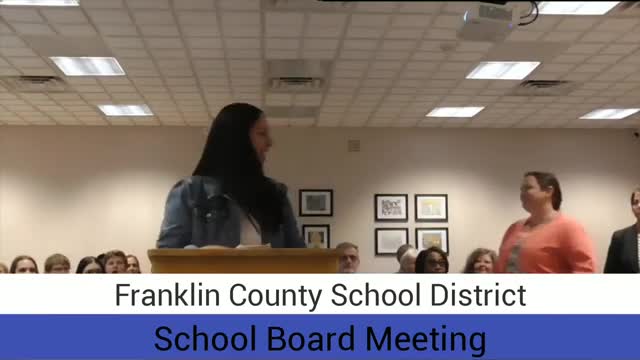Franklin County schools outline ESL services serving 224 students across nine schools
April 15, 2025 | Franklin County, School Districts, Tennessee
This article was created by AI summarizing key points discussed. AI makes mistakes, so for full details and context, please refer to the video of the full meeting. Please report any errors so we can fix them. Report an error »

Carla Abelos, an ESL teacher who said her homeschool is Huntland School, told the Franklin County Board of Education that the district currently serves 224 students classified as English learners across nine schools.
The presentation on the district’s English learners (EL) program, delivered by Abelos and colleagues Sarah Curtis and Leslie Torbalson, described how students are identified, how the state assessment ELPA21 is administered, and the district’s two models for delivering services.
"Our program is called ESL or EL. You'll hear it used interchangeably in the state of Tennessee and this refers to students who are classified as English learners and these are students whose first language is not English," Abelos said. She noted many students speak Spanish but that the district also serves students whose first languages include Filipino languages and other languages.
Sarah Curtis, identified in the meeting as an EL teacher whose homeschool is Park Memorial, described the identification process: every new student completes a home-language form and any indication of a language other than English triggers a screening. The district uses the Alpha21 screener to determine eligibility for services, Curtis said.
Curtis explained the district’s four classifications for EL services: L (full-time English learner), T1 (first year after exit), T2 (second year after exit) and waived services when parents decline services. She also described ELPA21, the state summative assessment that measures listening, speaking, reading and writing and is administered in a window beginning in February and closing in March.
Leslie Torbalson, identified as an EL teacher, described exit criteria: students who score a 4 or higher on each ELPA21 domain (listening, speaking, reading and writing) are exited from direct services the following school year. The district uses two delivery models: pull-out small-group or one-on-one instruction, and a scheduled English language development course at the high school level. ESL staff also support general education teachers by modeling scaffolds, modifying assignments for language access and providing classroom resources.
District staff said the program currently has six full-time ESL teachers and one teacher who serves Huntland High School for a single period. The presenters emphasized that some students are learning English as a third or fourth language.
Board members did not take a formal vote on the presentation; it was provided as part of the director’s report.
The presentation on the district’s English learners (EL) program, delivered by Abelos and colleagues Sarah Curtis and Leslie Torbalson, described how students are identified, how the state assessment ELPA21 is administered, and the district’s two models for delivering services.
"Our program is called ESL or EL. You'll hear it used interchangeably in the state of Tennessee and this refers to students who are classified as English learners and these are students whose first language is not English," Abelos said. She noted many students speak Spanish but that the district also serves students whose first languages include Filipino languages and other languages.
Sarah Curtis, identified in the meeting as an EL teacher whose homeschool is Park Memorial, described the identification process: every new student completes a home-language form and any indication of a language other than English triggers a screening. The district uses the Alpha21 screener to determine eligibility for services, Curtis said.
Curtis explained the district’s four classifications for EL services: L (full-time English learner), T1 (first year after exit), T2 (second year after exit) and waived services when parents decline services. She also described ELPA21, the state summative assessment that measures listening, speaking, reading and writing and is administered in a window beginning in February and closing in March.
Leslie Torbalson, identified as an EL teacher, described exit criteria: students who score a 4 or higher on each ELPA21 domain (listening, speaking, reading and writing) are exited from direct services the following school year. The district uses two delivery models: pull-out small-group or one-on-one instruction, and a scheduled English language development course at the high school level. ESL staff also support general education teachers by modeling scaffolds, modifying assignments for language access and providing classroom resources.
District staff said the program currently has six full-time ESL teachers and one teacher who serves Huntland High School for a single period. The presenters emphasized that some students are learning English as a third or fourth language.
Board members did not take a formal vote on the presentation; it was provided as part of the director’s report.
View full meeting
This article is based on a recent meeting—watch the full video and explore the complete transcript for deeper insights into the discussion.
View full meeting
